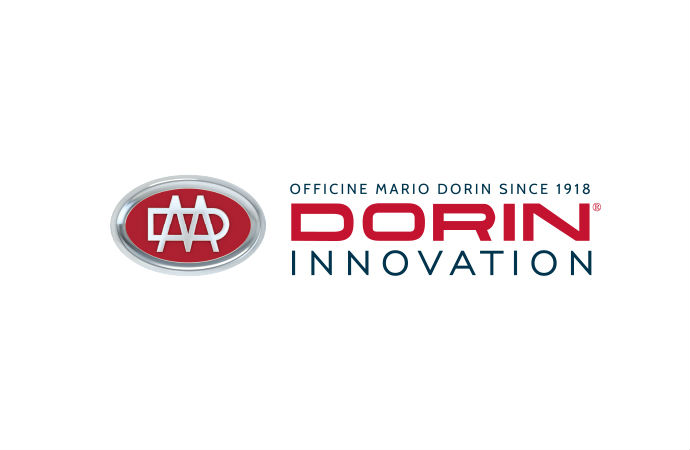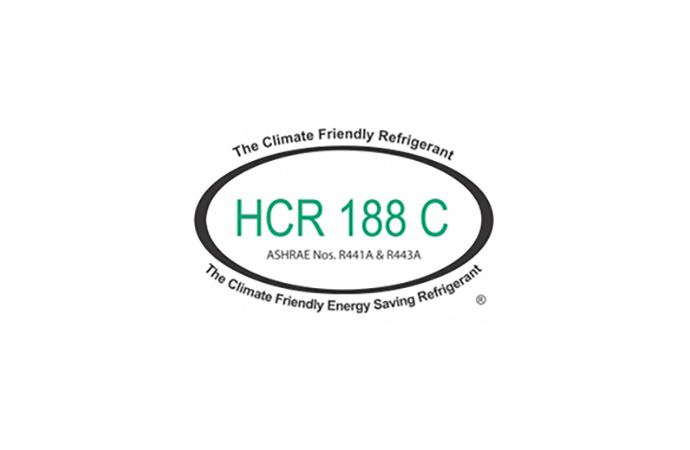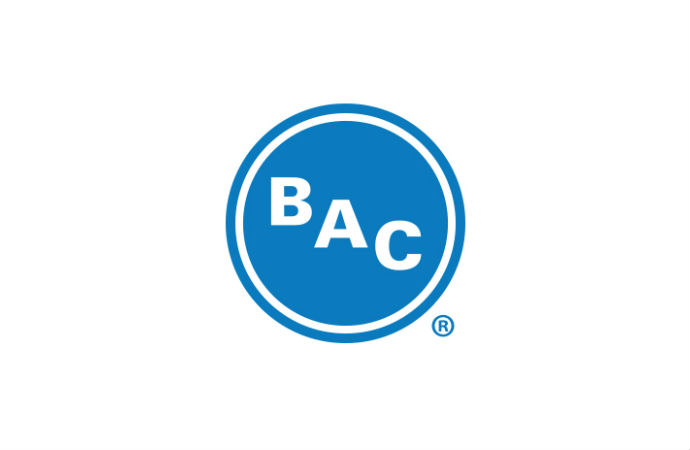Integrating the use of solar energy with direct drive, climate friendly “Greenfreeze” hydrocarbon refrigeration, SolarChill has significant market potential in vaccine and food refrigeration in areas without electricity. As the GEF funded ‘SolarChill Development, Testing and Technology Transfer Outreach’ project in Kenya, Swaziland and Colombia is about to enter the preparatory phase, hydrocarbons21.com talked to Janos Maté, International Coordinator of the SolarCh

hydrocarbons21.com: What do you expect from the ‘SolarChill Development, Testing and Technology Transfer Outreach’ project in Kenya, Swaziland and Colombia?
Janos Maté: The intent is large-scale demonstration of SolarChill technology, to give it higher global recognition, especially in developing countries. SolarChill technology combines solar powered, direct drive compression with ozone and climate friendly hydrocarbon refrigeration. The energy of the sun is stored in ice instead of lead batteries. A second aim is to encourage companies especially in Southern African and Latin American regions to take up the production of the technology.
hydrocarbons21.com: And how this will help to address some of the challenges faced by SolarChill?
J. Maté: The existence of the SolarChill technology is not well known yet. The intent is to increase global market awareness so that it gets picked up in as many places as possible.
That is why the Global Environmental Facility (GEF) funded the project. It is an ideal solution for regions without electricity, and there are about 3 billion people living in such regions. In these areas delivering vaccination programmes and refrigerating food is very challenging.
But the food refrigeration technology will also have market appeal in off the grid settings, such as recreational cottages, in industrialized countries.
hydrocarbons21.com: Except for the lack of electricity what were the other key criteria in selecting the countries concerned by the project?
J. Maté: The primary reason we selected these countries is that they expressed interest in the opportunity.
In the case of Swaziland, GIZ has already worked with a company called Palfridge and co-funded their conversion to hydrocarbons as well as the company’s development of their own-designed version of SolarChill.
In the case of Colombia, the Colombian government expressed a lot of interest in hydrocarbon technologies. So we approached them within the context of the Montreal Protocol discussions to see if they wanted to be part of this demonstration project. They were indeed interested, which makes good sense, as there are at least 5 or 6 companies in Colombia that produce refrigerators.
In Kenya on the other hand, they do not have a refrigerator-manufacturing sector, but we approached them because the United Nations is based in Nairobi.
hydrocarbons21.com: Have you identified manufacturers in each of the countries? What about the companies that can service the SolarChill technology?
J. Maté: Not yet. We know that there is one company in Colombia that has converted to hydrocarbons and also Palfridge in Swaziland. We shall try to build bridges between the HCFC phase-out management programmes of the Montreal Protocol and the uptake of the SolarChill technology. The biggest challenge for an existing company is to convert first from HCFCs or HFCs to hydrocarbons. Until they do that they will not be able to produce SolarChill as one of the key criteria for SolarChill is not using fluorocarbons in either the insulation or the refrigeration. Of course, new factories that are set up to work with hydrocarbons will be able to start producing SolarChill units from the beginning.
Developing a service infrastructure will have to be done concurrently with production start up. We want to help provide support for this infrastructure.
hydrocarbons21.com: Could you tell us more about the initiative related to technology transfer of the SolarChill project?
J. Maté: The SolarChill Project is a unique, twelve year old partnership between seven divergent international organisation. They include: Danish Technological Institute (DTI), German Government Development Agency (GIZ), Greenpeace International, Programs for Appropriate Technologies in Health (PATH), UNICEF, UNEP and WHO. None of the Partners have any commercial interest in SolarChill. The mandate is to develop and propagate the technology.
The GEF SolarChill Project includes two stages, the Preparatory Phase and the Implementing Phase. The preparatory phase is about to start once we have addressed the legalities of the contract that need to be signed between the various agencies involved in the project and UNEP. During the Preparatory Phase our goal is to set up the infrastructure within Colombia, Kenya and Swaziland. There will be a project consulting committee with all relevant stakeholders in the country. We will have local project coordinators in each country. And then we need to identify the sites where the SolarChill installations will be for the demonstration project. The timescale for this is the next half a year.
The Implementing Phase consists of purchasing the units, shipping them to the countries, installing them on site, monitoring them. And then, it is reaching out to potentially interested companies to see if they would be interested in a technology transfer opportunity. We will put together a technology transfer package that will provide technical know-how, original market research to show the demand for this product, and the technical results of the demonstration projects. If possible, we shall also try bring together manufacturers with interested investors and funding sources.
hydrocarbons21.com: Would you say that one of the eventual goals of the project would be to get at least one local manufacturer per country interested in producing SolarChill and then to have follow up projects that stem from that?
J. Maté: Either in the country or in the region, or to stimulate enough market interest that would give the incentive to companies to start producing it. In Colombia we would like to have at least one company producing SolarChill. In Swaziland, we already have Palfridge producing it, but we want to make sure that their market is expanded so that it will have been a worthwhile venture for them to go that route. In South Africa, Swaziland’s neighbouring country, there are some companies that might be interested and we are reaching out to them. In the Kenya region we have to see what is possible. More than that, we want to take that example to India, China and to other parts of the developing world and say this is the experience in these countries, we believe that there is demand for this technology in your region as well.
There are two SolarChills, SolarChill A is the vaccine cooler and SolarChill B is the food refrigerator. I get requests from many parts of the world for SolarChill B, for example from farmers, dairy farms, fishermen, silkworm producers, any activity that requires refrigeration in parts of the world where there is no electricity. We think that there is a big market potential for both SolarChill A and B.
hydrocarbons21.com: How will previous experience with developing SolarChill technology help when you try to get partners on board for this project?
J. Maté: In the development phase of SolarChill, we field-tested the technology in Indonesia, Senegal, Cuba and India. So we have substantial experience of the conditions that exist in these countries. And also there is a lot of refrigeration and vaccine cold chain expertise in the SolarChill team. We are fortunate to have the top experts in the world in the field of vaccine cooling, experts from PATH and UNICEF. It is a very rich coalition with tons of experience in developing countries. That expertise is essential for the whole source of the project and that is the strength of the project: it brings together environmental, social and health concerns in a very practical product, and the various organisations involved represent those three sectors.
THANK YOU!
Janos Maté: The intent is large-scale demonstration of SolarChill technology, to give it higher global recognition, especially in developing countries. SolarChill technology combines solar powered, direct drive compression with ozone and climate friendly hydrocarbon refrigeration. The energy of the sun is stored in ice instead of lead batteries. A second aim is to encourage companies especially in Southern African and Latin American regions to take up the production of the technology.
hydrocarbons21.com: And how this will help to address some of the challenges faced by SolarChill?
J. Maté: The existence of the SolarChill technology is not well known yet. The intent is to increase global market awareness so that it gets picked up in as many places as possible.
That is why the Global Environmental Facility (GEF) funded the project. It is an ideal solution for regions without electricity, and there are about 3 billion people living in such regions. In these areas delivering vaccination programmes and refrigerating food is very challenging.
But the food refrigeration technology will also have market appeal in off the grid settings, such as recreational cottages, in industrialized countries.
hydrocarbons21.com: Except for the lack of electricity what were the other key criteria in selecting the countries concerned by the project?
J. Maté: The primary reason we selected these countries is that they expressed interest in the opportunity.
In the case of Swaziland, GIZ has already worked with a company called Palfridge and co-funded their conversion to hydrocarbons as well as the company’s development of their own-designed version of SolarChill.
In the case of Colombia, the Colombian government expressed a lot of interest in hydrocarbon technologies. So we approached them within the context of the Montreal Protocol discussions to see if they wanted to be part of this demonstration project. They were indeed interested, which makes good sense, as there are at least 5 or 6 companies in Colombia that produce refrigerators.
In Kenya on the other hand, they do not have a refrigerator-manufacturing sector, but we approached them because the United Nations is based in Nairobi.
hydrocarbons21.com: Have you identified manufacturers in each of the countries? What about the companies that can service the SolarChill technology?
J. Maté: Not yet. We know that there is one company in Colombia that has converted to hydrocarbons and also Palfridge in Swaziland. We shall try to build bridges between the HCFC phase-out management programmes of the Montreal Protocol and the uptake of the SolarChill technology. The biggest challenge for an existing company is to convert first from HCFCs or HFCs to hydrocarbons. Until they do that they will not be able to produce SolarChill as one of the key criteria for SolarChill is not using fluorocarbons in either the insulation or the refrigeration. Of course, new factories that are set up to work with hydrocarbons will be able to start producing SolarChill units from the beginning.
Developing a service infrastructure will have to be done concurrently with production start up. We want to help provide support for this infrastructure.
hydrocarbons21.com: Could you tell us more about the initiative related to technology transfer of the SolarChill project?
J. Maté: The SolarChill Project is a unique, twelve year old partnership between seven divergent international organisation. They include: Danish Technological Institute (DTI), German Government Development Agency (GIZ), Greenpeace International, Programs for Appropriate Technologies in Health (PATH), UNICEF, UNEP and WHO. None of the Partners have any commercial interest in SolarChill. The mandate is to develop and propagate the technology.
The GEF SolarChill Project includes two stages, the Preparatory Phase and the Implementing Phase. The preparatory phase is about to start once we have addressed the legalities of the contract that need to be signed between the various agencies involved in the project and UNEP. During the Preparatory Phase our goal is to set up the infrastructure within Colombia, Kenya and Swaziland. There will be a project consulting committee with all relevant stakeholders in the country. We will have local project coordinators in each country. And then we need to identify the sites where the SolarChill installations will be for the demonstration project. The timescale for this is the next half a year.
The Implementing Phase consists of purchasing the units, shipping them to the countries, installing them on site, monitoring them. And then, it is reaching out to potentially interested companies to see if they would be interested in a technology transfer opportunity. We will put together a technology transfer package that will provide technical know-how, original market research to show the demand for this product, and the technical results of the demonstration projects. If possible, we shall also try bring together manufacturers with interested investors and funding sources.
hydrocarbons21.com: Would you say that one of the eventual goals of the project would be to get at least one local manufacturer per country interested in producing SolarChill and then to have follow up projects that stem from that?
J. Maté: Either in the country or in the region, or to stimulate enough market interest that would give the incentive to companies to start producing it. In Colombia we would like to have at least one company producing SolarChill. In Swaziland, we already have Palfridge producing it, but we want to make sure that their market is expanded so that it will have been a worthwhile venture for them to go that route. In South Africa, Swaziland’s neighbouring country, there are some companies that might be interested and we are reaching out to them. In the Kenya region we have to see what is possible. More than that, we want to take that example to India, China and to other parts of the developing world and say this is the experience in these countries, we believe that there is demand for this technology in your region as well.
There are two SolarChills, SolarChill A is the vaccine cooler and SolarChill B is the food refrigerator. I get requests from many parts of the world for SolarChill B, for example from farmers, dairy farms, fishermen, silkworm producers, any activity that requires refrigeration in parts of the world where there is no electricity. We think that there is a big market potential for both SolarChill A and B.
hydrocarbons21.com: How will previous experience with developing SolarChill technology help when you try to get partners on board for this project?
J. Maté: In the development phase of SolarChill, we field-tested the technology in Indonesia, Senegal, Cuba and India. So we have substantial experience of the conditions that exist in these countries. And also there is a lot of refrigeration and vaccine cold chain expertise in the SolarChill team. We are fortunate to have the top experts in the world in the field of vaccine cooling, experts from PATH and UNICEF. It is a very rich coalition with tons of experience in developing countries. That expertise is essential for the whole source of the project and that is the strength of the project: it brings together environmental, social and health concerns in a very practical product, and the various organisations involved represent those three sectors.
THANK YOU!
MORE INFORMATION
Related stories












